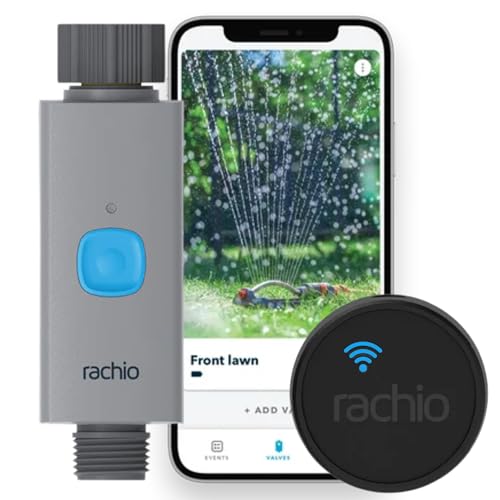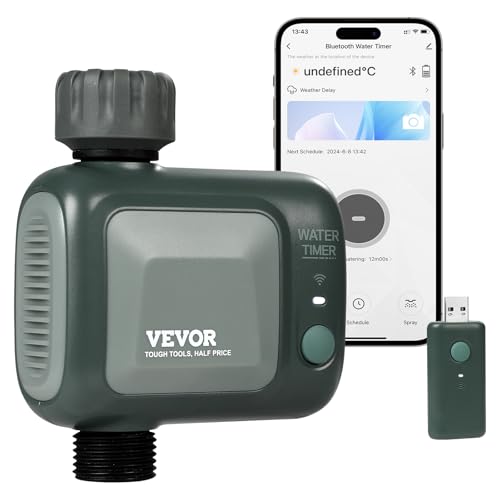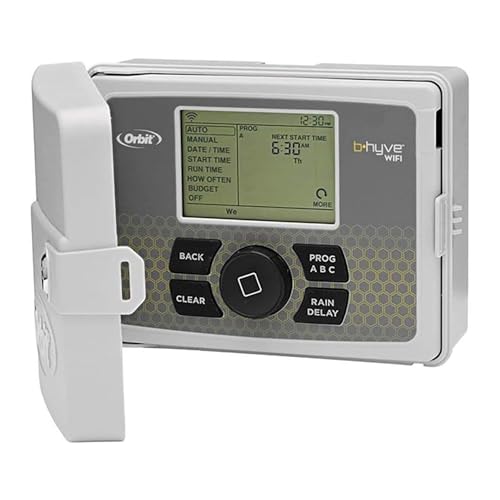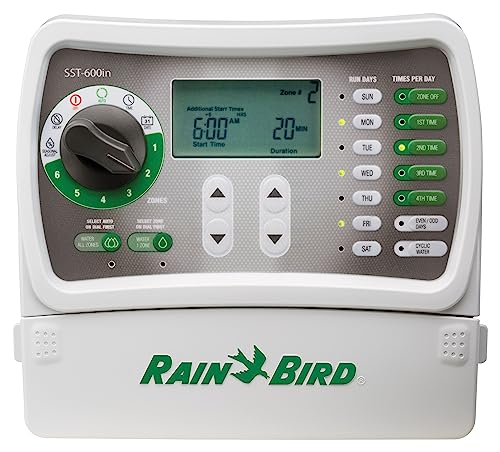


Overview of Rachio Schedules: Selecting the Right Schedule Type
Assess Your Local Climate


Evaluate Your Lawn and Garden Needs
Identify the types of plants in your garden by observing their characteristics, such as leaf shape, color, and size. Categorize them into groups based on their water requirements; for instance, group drought-tolerant plants separately from those that thrive in moist conditions. Adjust your watering schedule according to the season, ensuring that seasonal changes are taken into account, as some plants may need more water during hot summer months while others may require less during cooler periods. Regularly monitor soil moisture levels to ensure that each plant receives the appropriate amount of water.
Access Your Smart Sprinkler Controller
Log into your smart sprinkler system’s app or control panel using your registered username and password. Once logged in, take a moment to explore the interface; look for tabs or icons that represent different features like scheduling, moisture detection, and system settings. For example, if you see a “Schedule” icon, click on it to view or modify watering times and durations. Familiarity with these options allows for quicker adjustments, such as changing the watering schedule based on weather forecasts or plant needs.
Adjust Watering Duration
Adjust watering duration based on seasonal requirements. Increase watering times during hot summer months by adding an extra 10-15 minutes to each session, ensuring plants receive adequate hydration. Reduce watering durations during cooler, wetter seasons by cutting back sessions by 10-20 minutes to prevent overwatering and encourage healthy root development. Monitor weather conditions and plant moisture levels regularly, and make further adjustments as needed to keep plants thriving.
Change Watering Frequency
Adjust how often your sprinkler runs based on seasonal changes.
Set Seasonal Start Dates
Input seasonal start dates in your sprinkler system settings. Navigate to the programming section of your controller, and select the option for seasonal adjustments. Enter the specific start dates for each season, ensuring they align with your local climate patterns. Save the changes to allow your irrigation schedule to automatically adjust based on the time of year, optimizing water usage and supporting healthier plants.
Utilize Weather Sensors
Enable weather sensors in your smart sprinkler system if supported. Access the settings menu on the system’s app or control panel, and look for the option labeled “Weather Sensors” or “Smart Watering.” Activate the feature and select your preferred weather parameters, such as rain detection or humidity levels. For example, if rain is forecasted, the system can skip a scheduled watering cycle, preventing unnecessary water usage and ensuring healthier plants. Additionally, if the humidity rises above a certain threshold, the system can reduce the frequency of watering to maintain optimal moisture levels in the soil.
Monitor and Adjust Regularly
Monitor your lawn’s health by inspecting it regularly for signs of dryness, discoloration, or pest issues. Note any areas that look stressed and adjust your watering schedule accordingly, increasing the frequency or duration in those spots. Keep track of weather changes, such as rainfall or temperature fluctuations, and modify your irrigation plan to accommodate these factors. Regularly evaluate your lawn’s overall appearance and vigor, allowing you to fine-tune your watering routine for the best results.
Key Takeaways for Seasonal Adjustments
In conclusion, customizing a smart sprinkler schedule for seasonal changes is essential for maintaining a thriving garden and promoting efficient water usage. By implementing the outlined steps, gardeners can ensure their watering practices align with the unique needs of each season, resulting in lush, healthy landscapes while conserving water resources. With a little effort and attention, they can enjoy the benefits of a well-maintained garden year-round.
Essential Equipment Needed



Optimize Your Watering
Step-by-Step Guide to Optimize Your Watering Schedule
- Understand Your Landscape Needs: He should assess the types of plants in his garden and their specific watering requirements to determine how much water each area needs
- Set Up Watering Zones: She must divide her garden into different zones based on sunlight exposure, plant types, and soil moisture levels. This helps in scheduling appropriate watering times for each zone
- Utilize Smart Features: They can explore the smart features of the sprinkler controller, such as weather-based adjustments or soil moisture sensors, to make watering more efficient and conserve water
- Establish a Watering Schedule: He should create a watering schedule that considers the time of day, days of the week, and seasonal changes to optimize water usage and avoid overwatering
- Monitor and Adjust Settings: She needs to regularly check the performance of the sprinkler system and make necessary adjustments to the schedule based on plant growth, rainfall, or other environmental changes
Mastering Your Watering Schedule
To optimize a smart sprinkler controller’s schedule using weather data, one can take several steps:
- Real-Time Weather Updates: Connect the smart sprinkler system to real-time weather data services. This allows the controller to receive updates on current conditions, such as temperature, humidity, and rainfall.
- Rain Forecasts: Utilize weather forecasts that include precipitation predictions. If rain is expected, the system can automatically adjust or skip scheduled watering times, preventing unnecessary water use.
- Soil Moisture Levels: Some advanced systems can integrate soil moisture sensors. By combining local weather data with these sensors, the system can determine when the soil is adequately moist and can delay watering accordingly.
- Historical Weather Data: Analyze historical weather patterns to fine-tune watering schedules based on seasonal changes. This can help adjust for certain times of the year that may require less or more water based on average temperatures and precipitation levels.
- Evapotranspiration Rates: Use evapotranspiration data, which measures the amount of water lost to evaporation and plant transpiration. This information can guide the system to water more on hot, dry days and less during cooler, humid conditions.
- Custom Rules and Settings: Program custom watering rules that take into account local weather conditions. For example, a setting could be established to reduce watering frequency during cooler months or to not water during periods of extreme heat.
By implementing these methods, the smart sprinkler controller can operate more efficiently, conserving water and promoting healthier plant growth.
The recommended duration for each watering session can vary depending on several factors, such as the type of plant, soil condition, and environmental factors like temperature and humidity. Generally, a good guideline is to water for about 15 to 30 minutes per session.
To calculate the appropriate watering duration, one can follow these steps:
- Soil Moisture Check: Begin by checking the soil moisture. If the top inch of soil is dry, it’s time to water.
- Watering Method: Consider the method of watering. Drip systems may require longer durations, while sprinklers may need to run for a shorter period to achieve the same effect.
- Water Output Rate: Determine the output rate of the watering system. This can be done by placing a container under the sprinkler or hose and measuring how much water is collected in a given time (for example, 1 minute).
- Calculate Duration: Based on the desired depth of water (usually about 1 inch per week for most plants), calculate the duration needed to achieve that depth based on the output rate. For example, if the system delivers 1 gallon per minute and you need to apply 1 inch of water to a 100-square-foot area, it will be necessary to calculate how long it will take to distribute that volume.
By considering these factors, one can effectively determine the appropriate duration for watering sessions to ensure plants receive adequate moisture without overwatering.



Leave a Reply